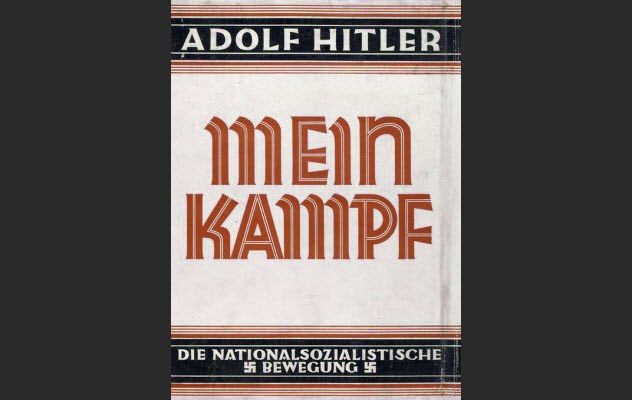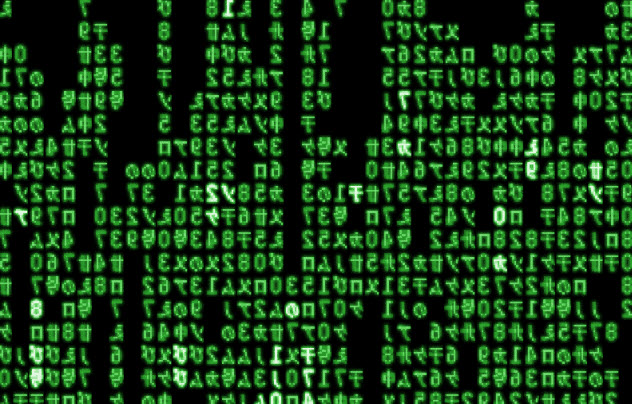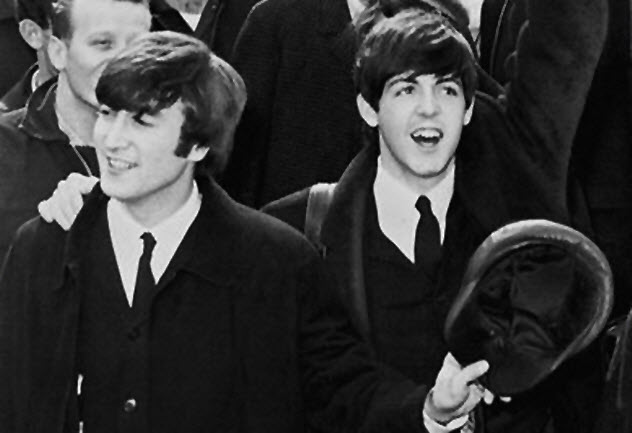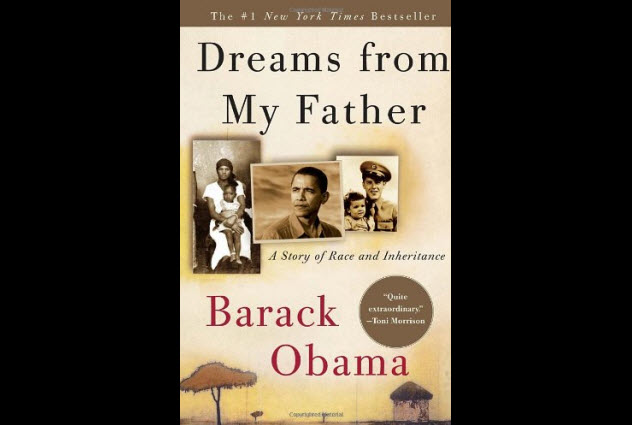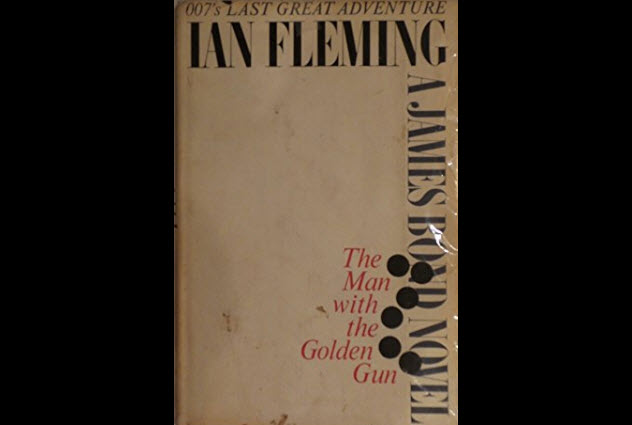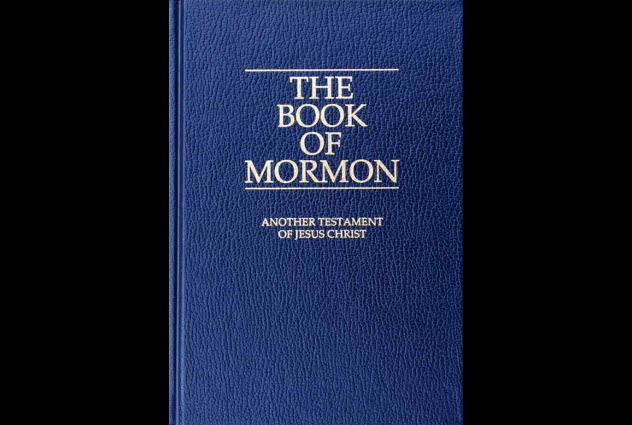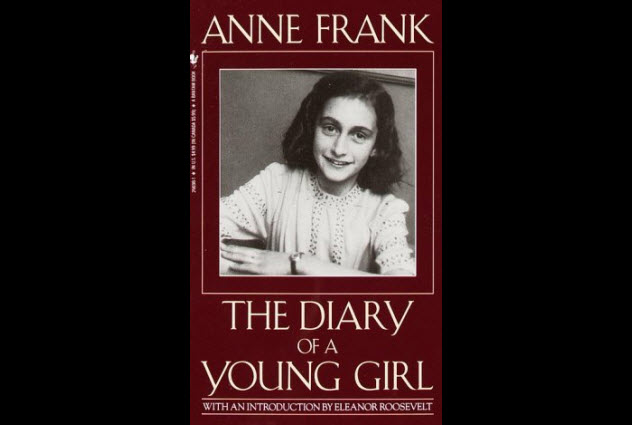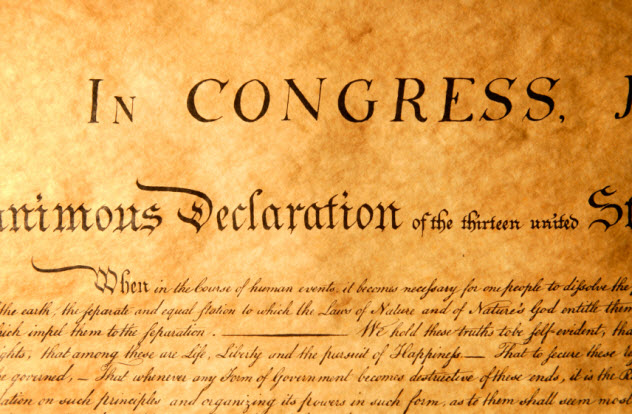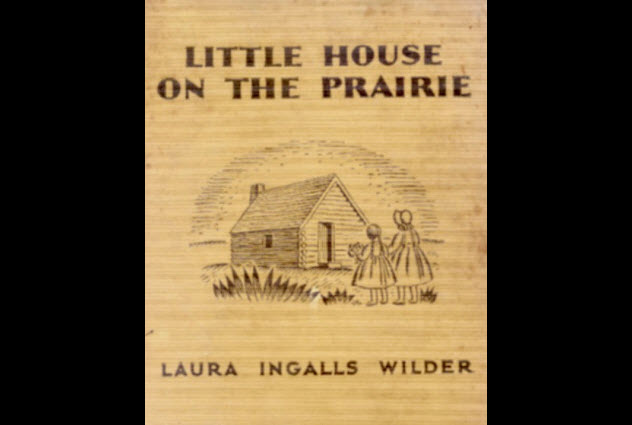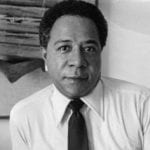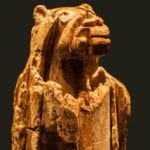10 Mein Kampf
If you have a morbid curiosity about what made Adolf Hitler tick, you might have tackled Mein Kampf. The manifesto lays out his diabolical thoughts in the most deliciously boring way ever. That’s right, Mein Kampf sucks in both style and substance. Infamously written as Hitler rotted in jail, the first volume of Mein Kampf was published in 1925 and the second volume in 1926. Subsequent releases added to and revised the original volumes. How is it possible that Hitler didn’t even write his autobiography? For starters, Hitler didn’t physically write Mein Kampf. Rudolf Hess and Emil Maurice were the typists—mostly Hess as Hitler paced around his jail cell and spewed his thoughts. Given that Hess was more learned than Hitler, it’s possible that Hess reshaped the manuscript and inserted his own thoughts. There’s also another troubling detail to the autobiography: It contains factual errors. Some of it can be chalked up to braggadocio, such as Hitler claiming to be a laborer when he never swung a hammer. But Hitler was uneducated while Hess had attended college. Even if the thoughts came mainly from Hitler, it’s very possible that Hess had quite a hand in shaping Mein Kampf.
9 The Matrix
If you were to type the phrase “who really wrote” into a general search engine that offers prompts, you might be surprised to see The Matrix as one of your options. According to websites such as thaindian.com and even a report on CNN in 2009, the hit film written by the Wachowski Brothers is seemingly not their intellectual property. Like most odd tales, there’s a smidgen of truth to the original claim about The Matrix. Once upon a time, a woman named Sophia Stewart filed an action claiming that the Wachowskis stole her treatment “The Third Eye” and turned it into The Matrix. She also claimed that The Terminator borrowed from “The Third Eye.” However, despite what must have been the greatest six-page treatment in the history of filmmaking, Stewart says that 20th Century Fox rejected her treatment. She represented herself in the lawsuit. Contradicting what thaindian.com reported, Stewart’s case was dismissed, and she was ordered to pay over $300,000 in attorneys’ fees to the defendants. She never paid. The story still pops up from time to time, but the Wachowskis are the true authors of The Matrix.
8 ‘Norwegian Wood’
When the Beatles wrote songs, the John Lennon or Paul McCartney songs were always copyrighted “Lennon-McCartney” even though the writing was often a solo effort. The pair was usually okay with that, and they always knew who really wrote which song. In one of Lennon’s final interviews, he told Playboy who actually wrote the individual Beatles’ songs. The authorship of only one song remained unclear: Who really wrote “Norwegian Wood”? Usually, the lead singer was the true author. Lennon sings lead on “Norwegian Wood.” The song even seems to be semiautobiographical, telling of an affair. He was known to carry on behind his first wife’s back, so the case seemed fairly open and shut. But in 1970, Lennon had admitted that McCartney came up with the middle section. In the book Paul McCartney: Many Years From Now, McCartney took it a bit further: So I picked it up at the second verse, it’s a story. It’s him trying to pull a bird, it was about an affair. [ . . . ] So she makes him sleep in the bath, and then finally in the last verse, I had this idea to set the Norwegian wood on fire as revenge, so we did it very tongue in cheek. She led him on, then said, “You’d better sleep in the bath.” In our world, the guy had to have some sort of revenge. It could have meant I lit a fire to keep myself warm, and wasn’t the decor of her house wonderful? But it didn’t, it meant I burned the f—king place down as an act of revenge, and then we left it there and went into the instrumental. In the 1980 Playboy interview, Lennon called the song “all mine.” But he was at a loss for where he came up with it. McCartney wasn’t. In the same book, McCartney explained: John told Playboy that he hadn’t the faintest idea where the title came from, but I do. [The brother of my girlfriend at the time] had his room done out in wood, a lot of people were decorating their places in wood. Norwegian wood. It was pine really, cheap pine. But it’s not as good a title, Cheap Pine, baby. Despite Lennon’s claim in his 1980 interview, it appears that McCartney did have quite a hand in writing “Norwegian Wood.”
7 Dreams From My Father
Regardless of how you feel about US President Barack Obama, his famous autobiography, Dreams from my Father, is rife with issues. There are composite characters and episodes that never happened. It’s also distinctly possible that Obama didn’t really write the book. At all. As a law professor at the University of Chicago in 1995, Obama received a $40,000 advance to tell the unique story of his life. Except that it was actually his second advance. He had received a $125,000 advance the prior year to write the book, but he couldn’t complete it. So what happened to spark the young lawyer into writing such elegant prose? The speculation is that he simply didn’t write it. Someone with more flair did. Former terrorist Bill Ayers was Obama’s acquaintance. Ayers had written Fugitive Days, a flamboyant tale of his life as the leader of the Weather Underground. Fugitive Days and Dreams from my Father share a similar tone and style. Even the flowery language is the same. From Fugitive Days: “I picture the street coming alive, awakening from the fury of winter, stirred from the chilly spring night by cold glimmers of sunlight angling through the city.” From Dreams from my Father: “Night now fell in midafternoon, especially when the snowstorms rolled in, boundless prairie storms that set the sky close to the ground, the city lights reflected against the clouds.” Maybe that’s just a common way to paint scenery. But it’s odd that the Flesch Reading Ease Score, a 0–121 scale that determines the readability of a work, puts Fugitive Days at 54 and Dreams from my Father at 54.8. That’s remarkably close. For an author to have consistent scores for different works is not uncommon. For two authors with entirely different backgrounds—one a radical and one a technical law writer—to have scores that close is intriguing. Ayers has joked about writing Dreams from my Father. He’s made the claim with tongue firmly implanted in cheek, generally in a trolling way to goad the conservative media. But is Ayers really pulling a fast one and telling the truth? Obama and Ayers both deny the allegation.
6 The Man With The Golden Gun
Without a doubt, Ian Fleming started The Man with the Golden Gun, the 12th novel in his James Bond series. Who finished it is another story. Fleming had a bad heart and died of a heart attack prior to the publication of the book. His usual style was to write a first draft and submit it to the publisher. Then he would use his second draft to greatly improve the diction and pacing of the story. The problem was that he died after completing the first draft. The prose in this book is different from the other Bond novels. Kingsley Amis, a huge Bond fan, was paid to review Fleming’s incomplete corrections to Golden Gun. As a Bond expert, Amis made meticulous notes and corrected some factual errors. But all of his suggestions were flatly ignored. So Amis did what any sensible Bond fan would do. He ripped the book to shreds in a scathing review, calling the work “lifeless . . . no decent villain, no decent conspiracy, no branded goods . . . and even no sex, sadism, or snobbery.” Even though Fleming didn’t complete the second draft, his changes were usually more grammatical from draft to draft. They weren’t lacking in the passion of the main theme. But The Man with the Golden Gun reads differently from all of Fleming’s other Bond books. So the question remains: Did Fleming not write with his usual flair because of his illness, or did another writer finish up the story?
5 The Book Of Mormon
According to the Church of Jesus Christ of Latter-day Saints, The Book of Mormon was written by an angel. Joseph Smith, who is listed as the author of the original 1830 edition, is simply the translator. But from the beginning, some people have viewed with skepticism this story of the angel called Moroni revealing gold plates to Smith. There are several theories about the authorship of The Book of Mormon. One of the most enduring is called the Spaulding theory. Solomon Spaulding was a Revolutionary War veteran who wrote a novel entitled The Manuscript Found. The first draft was supposedly stolen by Sidney Rigdon from its publishing house in Pittsburgh, Pennsylvania. Rigdon is one of the founders of the Mormon faith. In The Manuscript Found, a Roman fleet sailing to England is blown off course and ends up in North America. Similar to the contents of The Book of Mormon, The Manuscript Found has a stone with an inscription that leads to documents telling of fourth-century Roman adventures in America. The first claim that Smith “liberated” the general idea for the Book of Mormon was made in 1833. There is some evidence that Rigdon did work at the Pittsburgh publishing house where The Manuscript Found resided. But there isn’t much to link Rigdon to an actual theft. A 2008 study from Stanford University looked at the writing style of the Book of Mormon and found that Solomon Spaulding was probably one of the authors. The study also cited Rigdon as one of the authors but could not find evidence that Joseph Smith actually wrote any of the words. But there’s no way to know if the 2008 study is correct. As with most religious texts, it ultimately comes down to faith. For now, there’s no definitive proof linking Spaulding’s The Manuscript Found to The Book of Mormon.
4 The Diary Of A Young Girl
The Diary of a Young Girl by Anne Frank is one of the most poignant, important, and soul-crushing autobiographies ever written. Anne dreamed of being a writer, which led her to document her life in hiding in a small space in Holland. Of course, she never lived to see her work published because she died in a concentration camp during World War II. But The Diary of Anne Frank, as it is commonly known, is one of the most important works of the 20th century. Who would question Anne’s authorship? Holocaust deniers for one, but that’s to be expected. However, there were others who felt that the story was just a bit too polished to have come from such a young girl. After all, she was only 13 when she began writing her diary. In 1980, an academic study commenced to determine if Anne actually wrote the diary. The result was clear: She did indeed write The Diary of a Young Girl. But that wasn’t the end of the controversy because Anne had actually written two diaries. She filled up her first red-and-white diary in mid-1944 and then began a rewrite of the entire text. The original is known as the A version and the rewrite as the B version. The published version is actually the C version. Anne’s father, Otto, edited the two sources to create the published work. As Anne’s rewrite reflected her increasing maturity, Otto reinserted parts from the A version to create a more innocent Anne. For example, after Anne removed some childlike enthusiasm about an upcoming birthday from the B version, Otto put it back in the C version. Otto also portrayed himself in a better light and reinserted passages that were critical of his wife. However, Otto didn’t publish everything in either the A or the B version. He pulled out five pages. The contents were not revealed until the 1990s, long after his death. In those pages, Anne explained that the diary should be of no concern to her family. It’s “none of their business,” she said. If Otto had followed Anne’s wishes, he should not have read the diary, much less published it. As to authorship, the words were those of Anne Frank. But her father played the role of editor in deciding which of her thoughts to publish.
3 The Declaration Of Independence
Thomas Jefferson was exceptionally proud of his work on The Declaration of Independence. On his tombstone, his first accomplishment was listed as “Author of the Declaration of American Independence.” His service as president of the United States isn’t even on there. So how or why would there be any question of the declaration’s authorship? After all, it’s well-documented that Jefferson wrote it. A draft of the US Constitution still exists in Jefferson’s own hand. Or is it his handwriting? The theory is that influential rabble-rouser Thomas Paine played a part in the writing. And by part, we mean he wrote it. Paine was a tremendous muse to the American Revolution. There’s little doubt that Jefferson was inspired by Paine, but there are also curious passages in the Declaration of Independence that lead to questions. The original draft contained the phrase “Scotch and foreign mercenaries.” Paine wasn’t fond of the Scots, but Jefferson was. The entire sentence is peculiar because someone living in America wouldn’t need to separate the Scots from other foreigners. They’re all foreign to an American. Another passage referred to King George III as “the Christian king.” Jefferson and Paine were both deists, but only Paine was bitingly sarcastic to the point of almost being an atheist. The theory goes that Paine wrote the outline for the Declaration of Independence at a minimum, and Jefferson just filled in the blanks. But there’s no proof. Given the obvious influence that Paine provided in other writings, Jefferson could have just channeled his inner Thomas Paine to write the Declaration of Independence.
2 Little House On The Prairie
Laura Ingalls Wilder’s true tales set in the harsh wilderness of the American Midwest make Little House On The Prairie a timeless classic. Little House on the Prairie was actually the third book of the original eight-book series, but the popular 1970s TV program that was based on the books made the entire series colloquially known by the Little House on the Prairie name. The question is: Did the popular book series really come from young Laura Ingall’s diary, or was it the invention of her writer daughter, Rose Wilder Lane? Rose was a journalist by trade when she began “gathering” her mother’s childhood journals. Rose’s own diary describes her working on “Mother’s story.” But what did “work” actually mean? The speculation is that Laura Ingalls Wilder did keep a diary, but Rose actually constructed the stories and wrote the prose. In The Ghost in the Little House, William Holtz of the University of Missouri wrote, “What Rose accomplished was nothing less than a line-by-line rewriting of labored and underdeveloped narratives.” He believes that Laura Ingalls Wilder wasn’t a polished writer. In her own handwriting, scribbled notes accompanying her daughter’s typed text misspell “definite” as “deffinite.” Laura also remarks that her husband “don’t remember” certain events. That doesn’t match the eloquent storytelling in the Little House series. The basic story may have come from Laura Ingalls Wilder, but the evidence points toward her talented daughter, Rose Wilder Lane, as the true author.
1 Gone With The Wind
Margaret Mitchell was “only” a magazine writer—mainly in the entertainment section—when she suddenly wrote the blockbuster book of the 20th century. In 1926, Mitchell broke her ankle, which forced her into a prolonged recovery period. After she plowed through every book in the library, her husband, John Marsh, suggested that she write one herself. And she did just that, starting with the last chapter of Gone with the Wind and working backward to the first chapter. Then editor Harold Latham of Macmillan Publishers took a tour through the South to find talented new writers. A friend told him to look up Mitchell and find out about her book. Even though Mitchell had tried to keep the book a secret from friends, they soon learned that she was spending her days pounding away on her Remington typewriter. Mitchell was incredibly shy about her work. At first, she told Latham that she had nothing for him. But she revealed her book after learning that a friend had told Latham that Mitchell “wasn’t the type” to actually write a book. The rest is history. Other people also believed that Mitchell didn’t have the pedigree to write such a novel. She was independent, bullheaded, and supposedly didn’t have the gusto to go from writing magazine fluff pieces to penning the second most popular book at that time. Only the Bible had more readers. Those questioning Mitchell’s authorship looked askance at her husband, who was an editor by trade. He steadfastly denied any involvement. After Mitchell’s tragic death crossing Peachtree Street not far from her Atlanta home, her husband knew that the authorship question would heat up. Marsh gathered up her notes, drafts, and proof sheets. Then he placed them in a large envelope, sealed it, and signed over the seal. The envelope sits in a safety-deposit box in Atlanta, paid by a trust to keep it in perpetuity. It will only be opened if someone comes forward with “proof” that Mitchell wasn’t the author. In a codicil to his will, Marsh wrote, “I am confident it can be proved not only that my wife, Margaret Mitchell Marsh, wrote Gone with the Wind, but that she alone could have written it.” As of February 2016, no credible claim has arisen. Jake wrote a trivia e-book filled with crazy stuff like the kind you just read in this list. You can follow him on Twitter for more useless facts.
